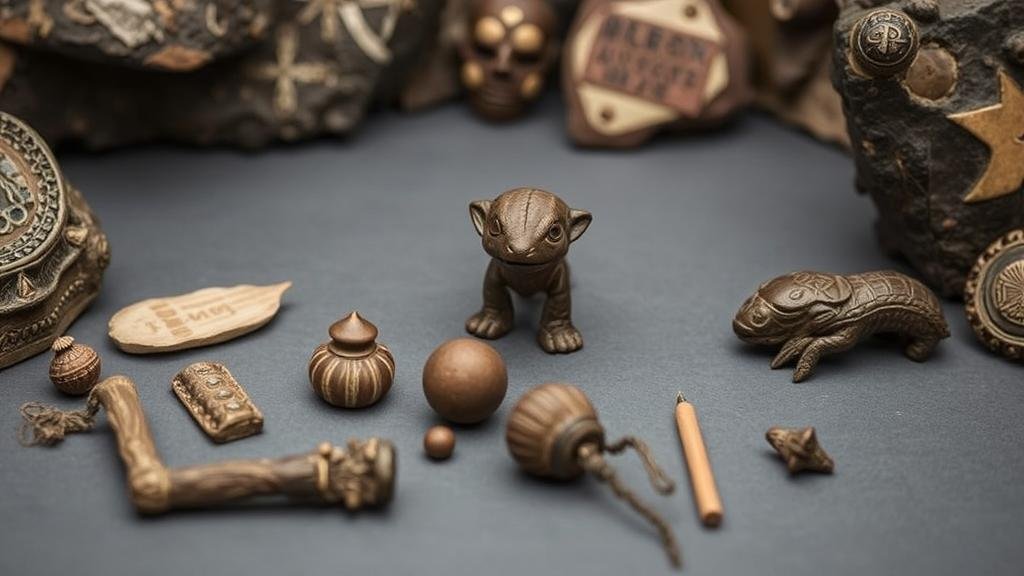Documenting the diversity of cultural artifacts found in global cryptid habitats.
Documenting the Diversity of Cultural Artifacts Found in Global Cryptid Habitats
The study of cryptids–creatures whose existence is not substantiated by scientific evidence–invokes a fascinating intersection of culture, folklore, and anthropology. Globally, various regions have enriched their lore by intertwining local traditions and artifacts with narratives of mysterious beings such as Bigfoot, the Loch Ness Monster, and the Chupacabra. This article explores the diversity of cultural artifacts linked to these habitats, highlighting their historical significance and regional influences.
The Concept of Cryptids and Their Cultural Significance
Cryptids often symbolize humanitys innate curiosity and fear of the unknown. thrive in areas replete with natural resources and folklore that reflects the essence of local communities. For example, Bigfoot, often sighted in the Pacific Northwest of the United States, has become a cultural icon, inspiring a plethora of documentaries, festivals, and local artwork.
To understand the breadth of cultural artifacts related to cryptids, it’s vital to consider the role of folklore. These narratives often serve as cautionary tales or moral lessons, effectively capturing the historical context of the regions they originate from. In this way, artifacts related to cryptids reflect not only local beliefs but also environmental adaptations.
Types of Cultural Artifacts
The artifacts associated with cryptids can be categorized into several types, each offering unique insights into local cultures:
- Artworks: Paintings, sculptures, and carvings often depict cryptids in a traditional or mythological context. An example includes the various representations of the Yeti in Himalayan art, highlighting the intertwining of nature and mythology.
- Textual Artifacts: Folklore collections and literature, including books like The Field Guide to Bigfoot and Other Mystery Primates, provide accounts that enrich understanding of these myths.
- Physical Evidence: Items such as footprints, hair samples, and photographs contribute to ongoing investigations, enhancing the narrative around cryptids.
- Tourism Materials: Souvenirs, brochures, and promotional items from cryptid-themed attractions, like the Loch Ness Monster visitor centers, showcase how these creatures have been commodified.
Notable Global Cryptid Habitats
Several notable regions worldwide are renowned for their cryptid lore, each contributing unique artifacts to the ongoing narrative. Here are a few examples:
- Pacific Northwest, USA: Home to Bigfoot, this region is rife with Sasquatch-related artifacts, including wooden sculptures and annual festivals celebrating sightings and stories.
- Himalayas, Nepal: The Yeti is a significant figure in local belief systems. Artifacts include traditional paintings and stories passed through generations that symbolize the mountains mysteries.
- Scotland: The Loch Ness Monster inspires numerous artifacts, from souvenirs shaped like the creature to documented sightings in literature that date back to the 6th century.
- Puerto Rico: The Chupacabra legend has led to cultural expressions visible in music and art, with local artists regularly incorporating themes of the creature in their work.
Case Studies of Cultural Artifact Documentation
Research and documentation play a crucial role in understanding artifacts linked to cryptids. A prominent example is the 2021 Cryptid Culture: A Study of Global Folklore, which examined over 300 cultural artifacts associated with cryptids across the world.
This study highlighted the correlation between environmental factors and the prevalence of specific cryptid legends. For example, in humid regions like the Bayou in Louisiana, the Rougarou is a popular figure among local communities, leading to various representations in textiles and crafts. Similarly, written accounts from indigenous tribes often accompany artifacts, providing context and historical roots.
The Role of Technology in Documenting Artifacts
Technological advances have revolutionized how these artifacts are documented and preserved. Digital platforms enable researchers and enthusiasts alike to share discoveries and theories widely. Online databases, such as the Cryptid Archive Project, allow users to contribute sightings and photographs, facilitating a collaborative approach to documenting cultural artifacts.
Plus, augmented reality (AR) applications are starting to offer immersive experiences related to cryptid habitats, bringing folklore to life. Visitors can use AR to visualize how cryptids might interact with their environments, thereby enhancing cultural understanding.
Challenges in Artifact Documentation
Despite the advancements in documentation efforts, several challenges remain in the field of cryptid studies:
- Credibility Issues: The anecdotal nature of many cryptid sightings raises questions regarding the authenticity of related artifacts. Researchers must navigate these complexities while trying to document valuable cultural histories.
- Cultural Sensitivity: Some communities may view their cryptid folklore as sacred or proprietary, necessitating respectful engagement and consent before documentation efforts.
- Resource Allocation: Limited funding and support for cultural research may hinder comprehensive documentation initiatives, particularly in remote areas.
Conclusion and Actionable Takeaways
The documentation of cultural artifacts associated with global cryptid habitats serves not only to preserve folklore but also to illuminate local identities and environmental relationships. Understanding these artifacts contributes to broader conversations about biodiversity and cultural heritage preservation.
For those interested in exploring this field, consider the following actionable steps:
- Engage with local folklore through museums or workshops dedicated to cryptids.
- Support or volunteer with organizations focused on folklore and cultural heritage preservation.
- Conduct field research in communities with rich cryptid stories while respecting local customs and traditions.
By documenting these diverse cultural artifacts, we can foster greater appreciation for the intricate narratives that shape human understanding of the natural world’s mysteries.



